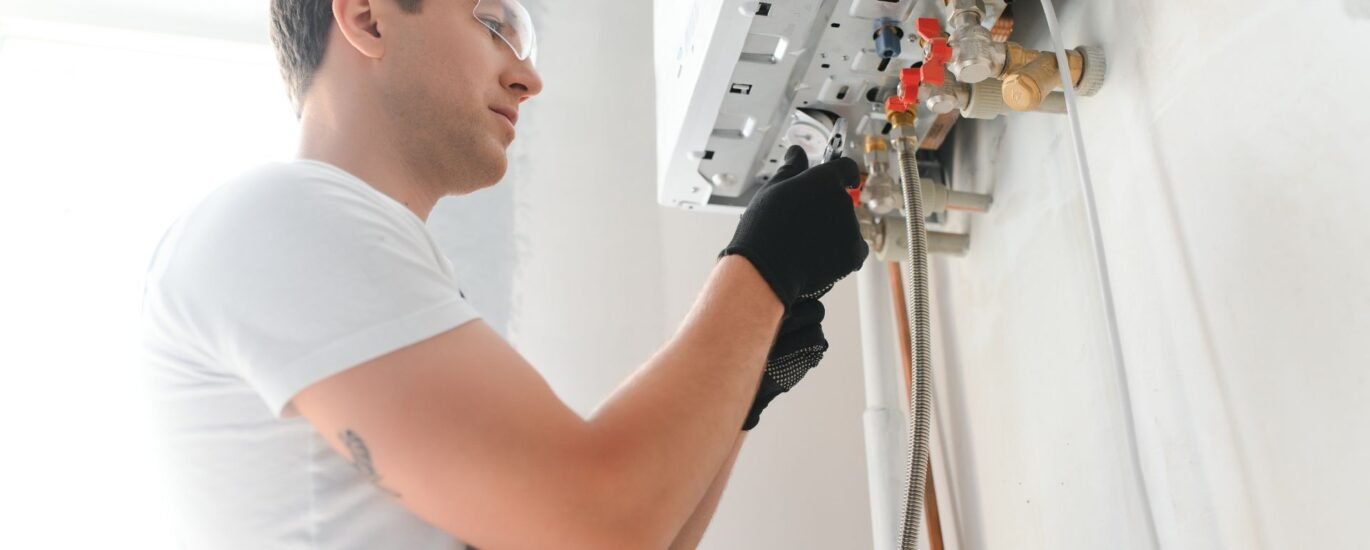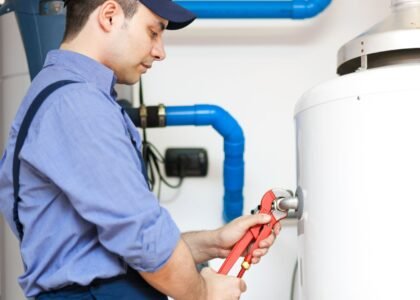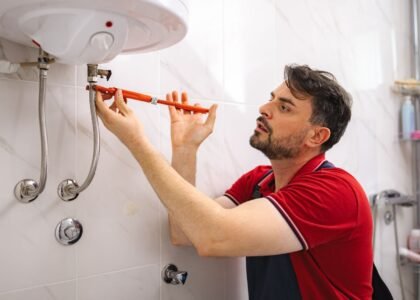Introduction
Once you’ve invested in a new water heater and had it installed, proper maintenance is the key to preserving its longevity and performance. In this blog, you’ll get a comprehensive maintenance roadmap — from regular checks to seasonal tasks — so your system keeps running smoothly for years.
And if you ever plan another install, you’ll find that Blog 3 loops back into choosing upgrades wisely.
Why Maintenance Matters
Few homeowners think about what happens after installation. But keep these in mind:
- Every home’s water contains minerals, sediments, and scale — these degrade performance over time.
- Leaks or corrosion can begin silently, causing major damage if not caught.
- Efficiency declines gradually, meaning your cost to heat water goes up.
By keeping up maintenance, you protect your initial investment and extend useful life.
Monthly / Quarterly Checks
Here’s what you can do on a short routine:
- Inspect around the unit
Look for moisture, rust, corrosion, or signs of leakage. - Check water pressure at taps
A drop in pressure may signal sediment blockage. - Test the temperature
If water is too hot or fluctuating, the thermostat may need adjustment. - Examine venting (for gas units)
Ensure exhaust vent and intake vents are not blocked.
These simple checks catch minor issues before they escalate.
Biannual / Annual Maintenance
Twice a year to once a year, perform more thorough tasks.
- Flush the tank
- Turn off power/gas and let the tank cool
- Attach garden hose to drain valve and flush until water runs clear
- Sediment removal improves heating efficiency
- Inspect and test the pressure relief valve (TPR valve)
- Lift the lever and let it snap back
- Water should shoot out; if not, clean or replace
- Check anode rod (if applicable)
- Remove rod and inspect for heavy corrosion
- Replace if more than 50% worn
- Check wiring, gas line fittings, venting, and insulation
- Retighten loose fittings
- Insulate exposed hot water lines, especially in cold areas
- Descale / remove mineral buildup (especially for tankless systems)
- Use vinegar or manufacturer-recommended descaling solutions
- Follow the flush cycle procedure
If any of these tasks feel beyond DIY, you can always reach out again via our Contact Us page for professional support.
Troubleshooting Common Issues
Despite your best efforts, problems may arise. Here are common trouble spots and fixes:
| Problem | Possible Cause | Suggested Action |
|---|---|---|
| No hot water | Pilot out, heating element failure, thermostat issue | Check pilot or breaker; call a technician if defective |
| Inconsistent hot water | Sediment insulation, scale, thermostat issues | Flush tank, clean or adjust thermostat |
| Leak at base | Corrosion, cracks, faulty fittings | Inspect and repair or replace tank |
| Rusty water | Corroding interior or anode rod | Replace anode or tank, check water quality |
| Pressure relief venting a bit | Excess pressure or thermal expansion | Install or check expansion tank |
Maintenance helps reduce the frequency of these issues, but staying alert is key.
Seasonal Tips for Chino, CA
Living in Chino provides specific seasonal considerations:
- During summertime, high ambient temperatures reduce heating load — check thermostat settings to avoid overheating.
- In winter or cooler months, monitor insulation and ensure no condensation forms around venting.
- If your water supply has hard water, winter usage may exacerbate scale — so flush and descale before summer peaks.
- Plan maintenance before the high-demand months (e.g. before family gatherings or holidays) so you don’t deal with any surprises.
When Maintenance Indicates It’s Time to Replace
Even the best-maintained heater will eventually wear out. Signs include:
- Frequent need for repairs
- Shrinking heater capacity
- Loud noises despite regular flushing
- Declining reliability
If you start encountering these, revisit Blog 1’s decision criteria and step into Blog 3’s upgrade planning.
How Maintenance Connects Back to Installation Upgrades
Your experiences during maintenance often guide your next installation decisions:
- If scale buildup is recurring — consider tankless or hybrid upgrades.
- If you’re now doing frequent repairs, plan for a next-generation replacement.
- Efficiency drops may push you toward a more advanced model.
- The right installer will consider your maintenance history when recommending upgrades — that’s where our expert installation in Chino, CA page becomes relevant again.
Conclusion
Maintenance is your water heater’s best friend. With regular attention — flushing, checking valves, inspecting system parts — you prolong the life and performance of your unit.



